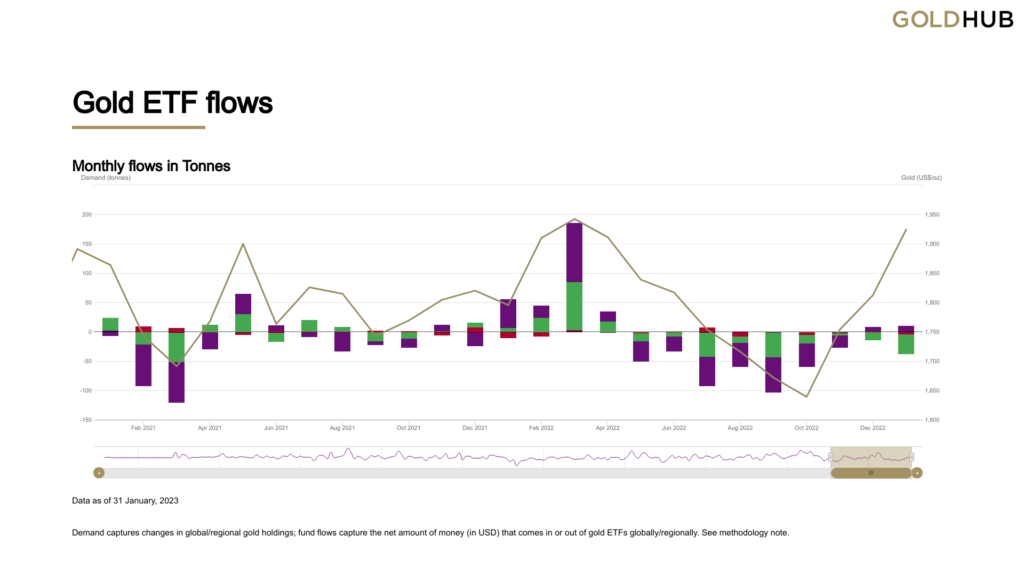
Global physically backed gold ETFs kicked off 2023 with net outflows of $1.6 billion in January and a 0.8% decline (26 tonnes) in total holdings to 3,446 tonnes, the World Gold Council (WGC) says in its latest monthly update.
While the gold price witnessed its strongest January in a decade, registering a 6.1% gain, gold ETF outflows in Europe and Asia dwarfed positive demand in North America and other regions, WGC data shows.
North American funds likely benefited from gold’s strong price performance as the dollar weakened and interest rates stabilized, leading to $572 million (9 tonnes) of net inflows, according to the Council. Positioning in the gold ETF options market may have been another contributor as most inflows occurred around monthly gold ETF options’ expiry date, it adds.
In contrast, European funds saw outflows of $2.1 billion (33 tonnes) in January, extending their losing streak to nine months. Rising rates as European central banks catch up to the Fed, currency appreciation and strong local stock market performances may have diverted investors’ attention away from gold ETFs, the WGC says. This was particularly evident in the UK, where gold ETFs accounted for the lion’s share of the region’s negative flows ($1.3 billion, 21 tonnes).
In Asia, Chinese funds witnessed outflows of $200 million (3 tonnes) during January, taking up the bulk of the region’s $246 million (4 tonnes) total. The CSI300 stock index’s 7% jump during the month and an appreciating CNY against the USD likely weakened investors’ appetite towards gold.
Finally, funds in the other regions registered positive flows of $104 million (2 tonnes), the largest monthly tonnage increase since January 2021, mainly contributed by Turkey.

Overall, collective gold ETF assets under management (AUM) increased by 5.3% to $213 billion by the end of the month, aided by the gold price increase despite outflows in tonnage terms.
(Click here to view the detailed monthly WGC report)